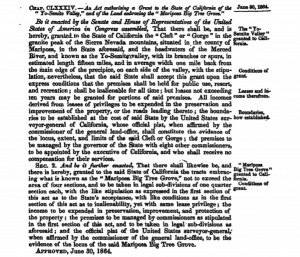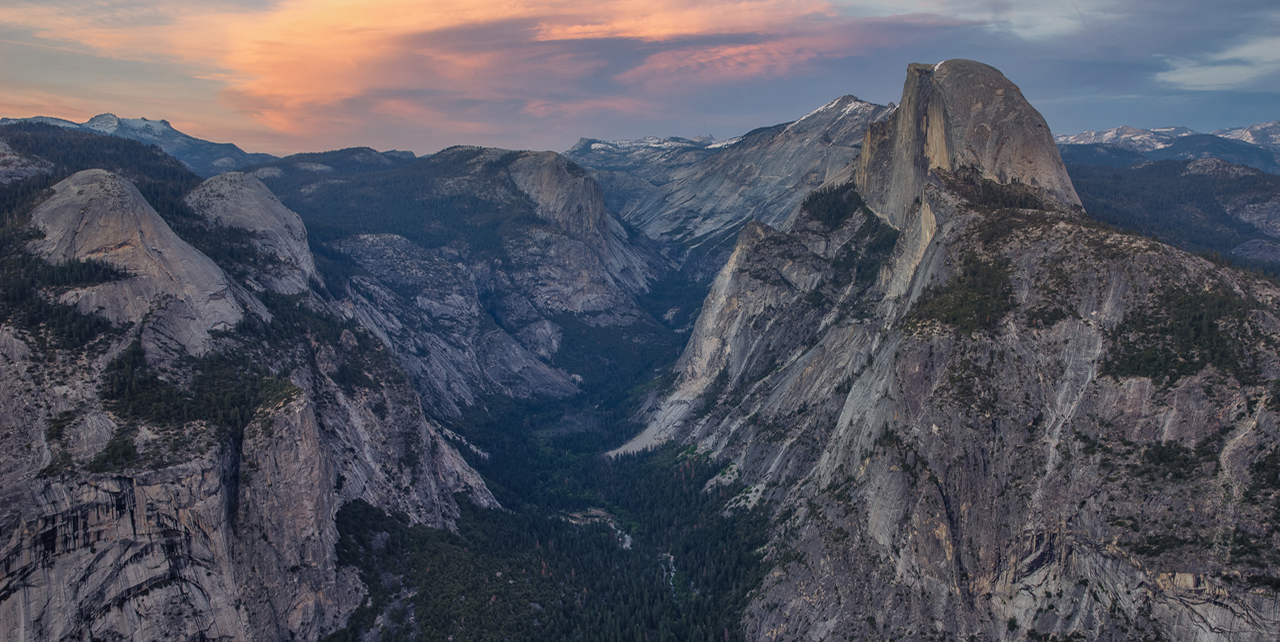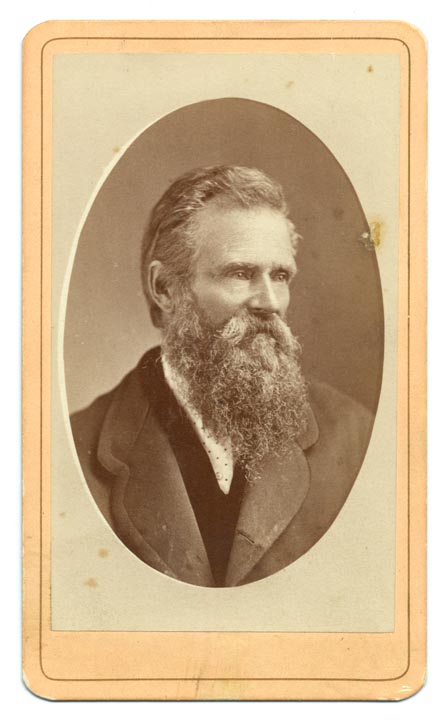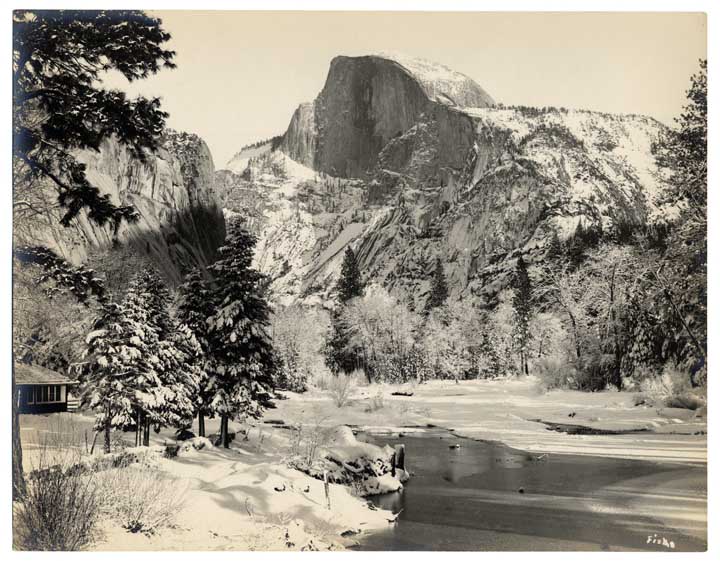On June 30, 1864, in the midst of the Civil War, President Abraham Lincoln signs a bill entitled “An Act authorizing a Grant to the State of California of the ‘Yo-Semite Valley’ and of the Land embracing the ‘Mariposa Big Tree Grove.’ “

This bill, more commonly known as the “Yosemite Grant Act”, is both breathtaking in its scope and surprisingly brief in length.
In just three run-on sentences, authored by U.S. Senator John Conness of California, the federal government agrees to transfer thousands of acres of land to the State of California — while engaged in a bloody war that could tear the country apart.
The gift is not without conditions. In giving the state the Yosemite Valley, 15 miles of the Merced River and up to 2,560 acres surrounding the Mariposa Big Tree Grove, the law stipulates that the said State “shall accept this grant upon the express conditions that the premises shall be held for public use, resort, and recreation…”
This is the first time federal law specifically designates and protects land for preservation and public use as a park.
Though hailed as groundbreaking, the new park gets off to a rough start: Loggers continue to remove trees from the area. In response, the California Legislature appoints Galen Clark as the “Guardian of Yosemite” and tasks him with protecting the natural resources of the valley.
Nearly 40 years after the land is transferred to the state, Assemblyman Miguel Estudillo authors Assembly Bill 248 which authorizes the retrocession of Yosemite Valley — and all the headwaters of the Merced River — to the federal government for use as a National Park.
This land that California gave up is now visited by over 3.7 million people annually.
Yosemite earns World Heritage Site designation in 1984, graces specialty California license plates and appears on two commemorative U.S. quarter dollar coins; as part of 2005’s “50 States” quarters and the “America the Beautiful” series in 2010.


